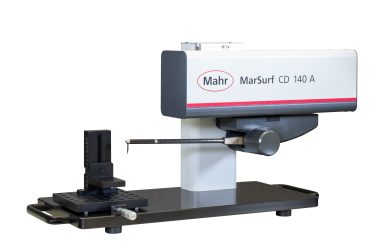Achieving a standard of excellence within companies is not an easy task for managers and employees to do. Therefore, it is necessary to use several quality management tools to achieve the expected results. Each of the tools is suitable for a type of analysis and it is not enough just to exist in theory. They must be put into practice and used correctly as each business or stage requires a different assessment.
Check out nine quality management tools and choose the most suitable for your company.
1. Flowchart as a quality management tool
This is a fundamental tool for the sector to define its processes and how they should take place. By means of geometric figures and indicative arrows, there is a graphic representation of the stages of the project and their sequence.
This allows it to be understood more easily, creating an orderly and uniform work environment. The flowchart can be used by any company and it helps to cultivate general knowledge about the structure of the business. This method helps to define the responsible for each stage and how each stage should take place, without anything being left out or delivered out of time. In this way, avoiding deviations and the wrong execution of the process. By having a clear view of all stages, it is possible to reevaluate the entire process or to change it completely, if applicable.
2. Ishikawa diagram
Also known as fishbone or cause and effect diagram, this tool aims to identify what may be causing a problem (cause) and what is its result (effect). Although it can be used in any segment, it is more common in industries. The causes of the problems are divided into method, machine, material, man/mind power, measurement/medium, and environment each of which may have several roots.
Method: practices and procedures for carrying out the work and how much the work format caused the problem.
Material: raw material used that was not in conformity for carrying out the work;
Man/mind power: team difficulties in executing the process;
Machine: errors in machinery;
Measurement: monitoring and data collection done incorrectly;
Environment: climatic factors and market situations, for example.
By doing this survey in a segmented way, it becomes easier to identify the main causes and develop actions to eliminate them, maintaining the principles of continuous improvement within the company.
3. Check sheets
Although many people confuse the check sheets with checklist, it must be made clear that they are quite different tools. Check sheets are usually tables or spreadsheets that aim to collect information with solid data. The advantage is that they can save time, as they do not need drawings or reports. The check sheet has easy visual interpretation. It facilitates the standardization of data collection, avoids rework and optimizes the time of the team that seeks more concrete data.
They can be used in industries, call centers, businesses and various types of companies, to measure productivity in a given time. For example, a bus ticket collector can use the check sheet to record the number of passengers on each lap. First, it is necessary to define which event or problem will be observed. Another important point is when the data is collected and the time of analysis. Enjoy and test the tool in a short period of time. This ensures that it is easy to use and it collects data appropriately.
4. PDCA
A well known and used tool in many companies is the PDCA, as it adapts to any segment of work. It helps in the elaboration, execution, monitoring and improvement of a project, based on four basic pillars, from which its name is derived. It stands for:
Plan: define what will be done and your goals;
Execute (do): put the planning into action;
Check (check): analyze the data and results obtained;
Act: evaluate the results, identifying points for improvement and corrective actions.
This is a cyclic tool that has no end, since it is always seeking to improve the process and mitigate risks. The continuous improvement encouraged by the PDCA can give your organization a distinct competitive advantage over competitors. The increase in productivity and efficiency due to the use of the PDCA cycle will increase the profitability of your business and customer satisfaction in the medium and long term.
5. Pareto chart
The Pareto chart is a graph composed of ordered bars, which is used to facilitate the visualization and comparison of a series of data groups in companies. Through the graph presented with the collected data, it becomes much simpler to understand which of the groups would be the most significant to search for the appropriate solutions. It also helps in locating the main problems – measuring them in several categories. In addition, the method measures the impact of changes in the process and differs generic causes from specific causes.
To apply it, some steps are essential, among them:
a) set a goal;
b) determine the causes and forms of measurement;
c) determine periodicity;
d) establish the form of data collection;
e) analyze the data
f) build the Diagram.
After collecting the data, make a detailed review in order to map what is not working.
6. SWOT analysis
In Portuguese, the acronym SWOT stands for Strength, Opportunities, Weaknesses and Threats. This tool is part of an administrative technique, used to improve the competitive advantages of the corporation in the market. It also allows for the repair of faults that can compromise the enterprise. The SWOT analysis identifies the company’s strengths and weaknesses, through 4 concepts:
Strengths: represents what advantages the company has over the competition. Examples: which business processes are successful? What assets do you have on your team, such as knowledge, education, skills and reputation? It can also be something related to your company’s brand attributes.
Weaknesses: points in which the company has weaknesses or flaws that can impair its performance, compared to competitors. Examples: business processes need to be improved? Are there any tangible assets that your company needs such as money or equipment? Are there gaps in your team that hinder the process?
Opportunities: internal and external aspects that tend to promote improvements. Examples: is the market in which it operates expanding and will it allow for an increase in customers? Are there future events that the company can take advantage of to expand its business? Are customers satisfied with the products offered?
Threats: market trends that can generate risks for the business. Examples: Is consumer behavior changing in a way that can negatively impact your business? Are there market trends that can become a threat? The expansion of a competitor company and product innovation are also good examples.
7. Control charts or graphs
The control charts are used to point out the aspects of the observation points in a certain period of time. This method shows changes in the normal production process, detecting flaws and variables. Calculation of control limits is done using previous data, using simplified formulas. It is possible to use variable data – from results achieved – or data by attribute, according to material specifications.
The main benefits of the control chart are:
– increase in the percentage of products capable of meeting customer requirements;
– reduction of re-work and waste;
– decrease in manufacturing costs;
– relevant information to improve the process.
8. Scatter diagram
The scatter diagram is a graphical tool that analyzes the behavior of events. Unlike the line diagram, the scatterplot depicts two numerical (quantitative) axes. When the diagram is executed in the company’s production process, it is possible to measure variables such as quantity, volume, time and space. With that, we try to relate the events with the variables to arrive at mathematical results. That is, the more related the conditions are, the dispersion will be able to form a line or curve. Examples:
– weight x height;
– amount lost x storage time;
– quantity produced x unit cost;
– consumption of raw material x volume produced;
– product purity x amount of material used;
– production speed x temperature.
9. Six Sigma
Six sigma is a planned management method, with a focus on quality and financial results. It aims to promote specific changes in companies, seeking continuous improvement of the processes, products and services offered at a much lower cost. The main objective is to encourage a focus on what is important to customers and how to achieve it. Thus, the reason for the existence of this tool is the total satisfaction of consumers.
Six Sigma benefits:
– reduction of organizational costs;
– prospecting and customer loyalty;
– cancellation of activities that do not add value to the company;
– greater involvement between teams;
– significant increase in productivity and quality of products and services;
– changing organizational culture;
– decreased variation in processes.
If you know how to take advantage of facts and data, it is easier than ever to meet quality improvement needs. Did you like our tips on quality management tools? It is possible to use various combinations between them, according to your need. This makes the company’s processes more positive and accurate. So don’t waste time and start putting them into practice now!
Business photo created by freepik – www.freepik.com
The post Quality management tools to implement in your company appeared first on Genebra.





